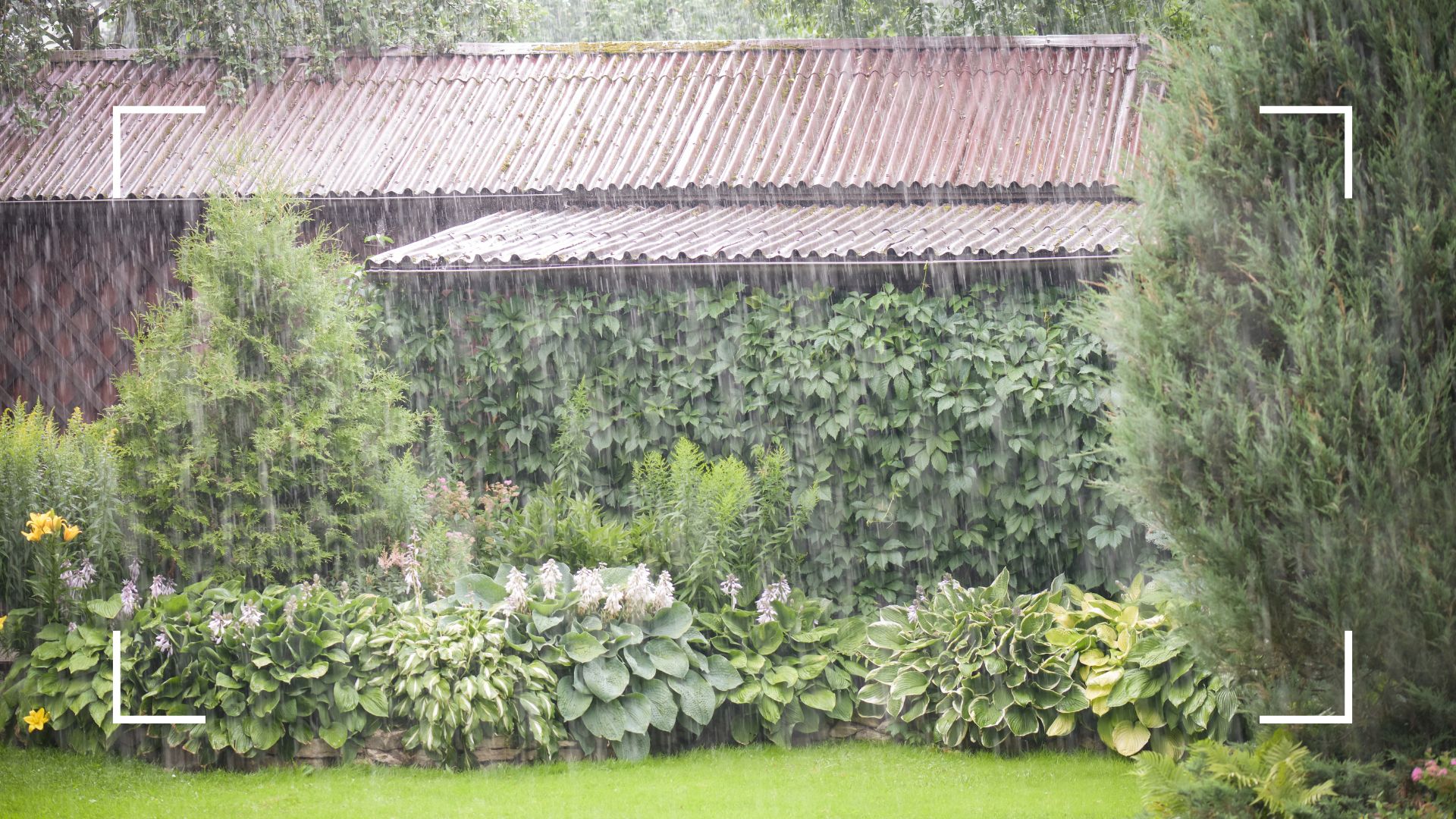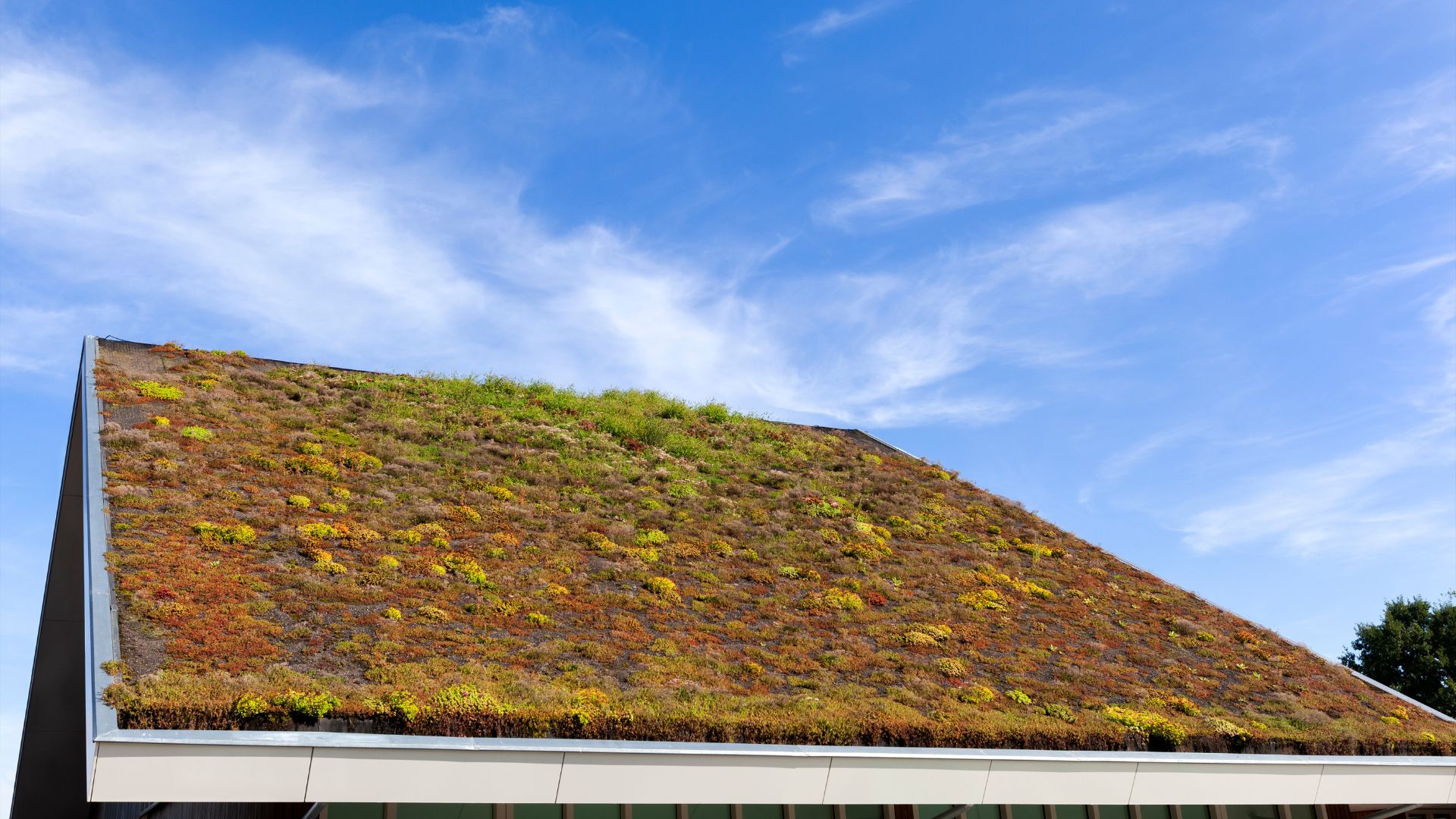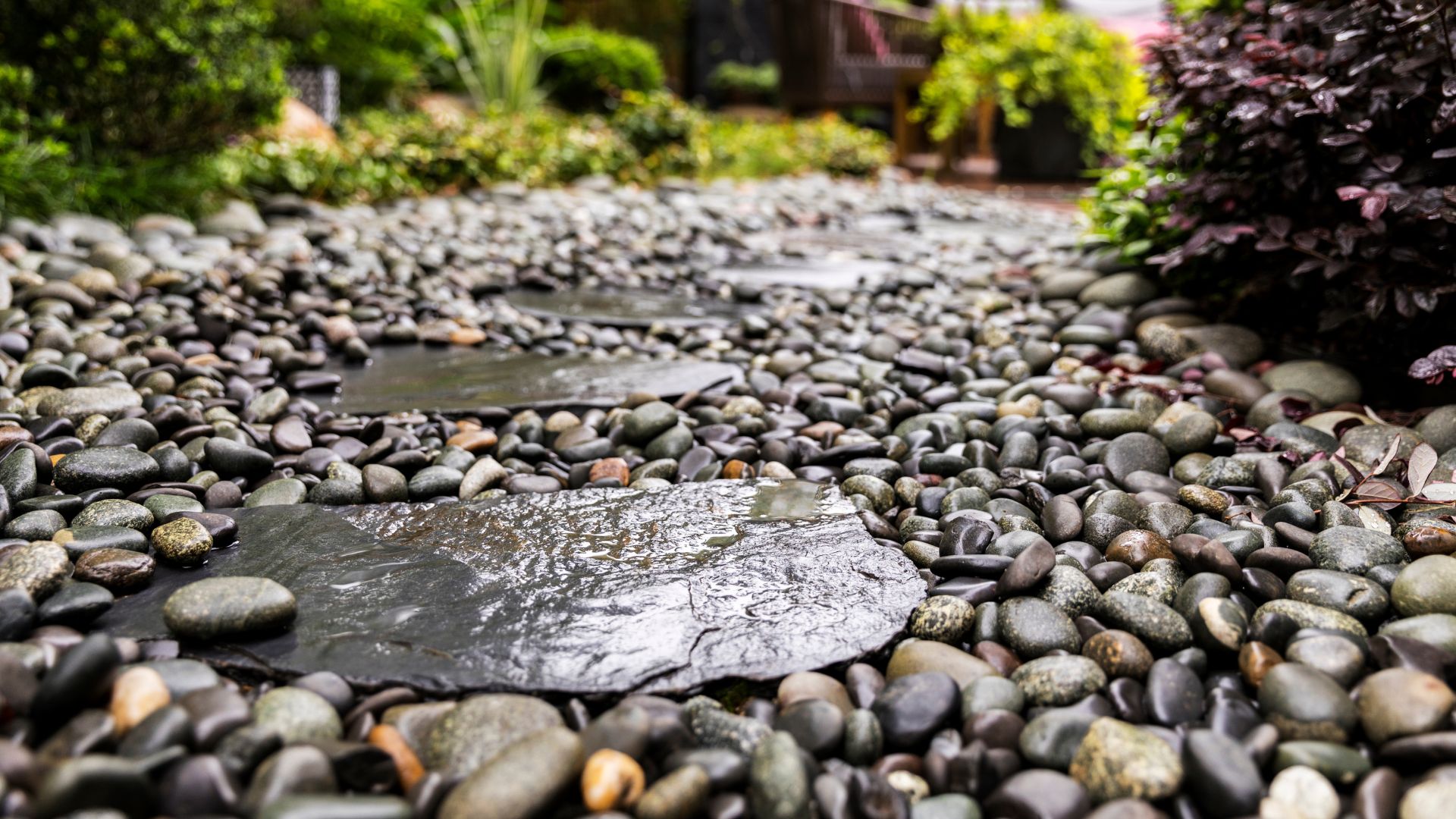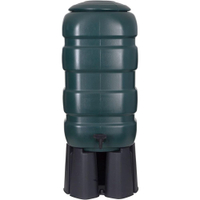What is rainscaping and how can it benefit your garden? Experts reveal all you need to know about the trend
Looking to level up your garden's ecosystem? Rainscaping will not only do that but also encourage wildlife, nurture your plants and keep your home safe from flooding


There's a new landscaping trend on the block and it's all about rain. It's time to take full advantage of the UK weather with the rainscaping garden trend, but what does it entail and how will it benefit your garden?
With all the garden trends going around at the moment it can be easy to get pulled into starting a vegetable garden or completely changing the layout of your existing garden design. And whilst the biggest projects are fun there's nothing like finding an easy trend that saves you money but nourishes your plants with ease. This is exactly what rainscaping achieves.
Speaking to Jane Dobbs, lead gardener at Allan's Gardeners, she explains the trend, "Often called green infrastructure or rain landscaping, rainscaping helps manage stormwater runoff while improving the look of outdoor spaces. There are different techniques and practices used to reduce erosion, clean up pollution, and replenish groundwater."
But what are the benefits of this latest garden trend and how can it be used in our own backyards?
What is rainscaping? An expert opinion
If you're into sustainable garden ideas and finding ways to make the most out of natural resources this is certainly the trend for you. Using rainscaping is particularly useful if you're looking to achieve the rewilding trend in your back garden and are working hard to encourage more wildlife into your space.
"Rainscaping is a type of landscaping that prioritises water conservation and natural drainage, whilst promoting healthy ecosystems. Instead of letting all rainwater flow straight into the drain, rainscaping makes use of plants and soil to absorb the water," explains Charlie McNeill, the managing director at Rainclear Systems.

A green roof to demonstrate an aspect of the rainscaping garden trend in action
There are endless benefits to using the rainscaping method in your back garden, from preventing flooding to lowering your water bills. Charlie says, "Plus, it’s great for the environment. Rainwater picks up pollutants as it washes over surfaces like driveways, patios and rooftops, which usually ends up in drains and, eventually, our rivers and streams. However, the plants and soil used in rainscaping act as a natural filter, trapping these pollutants before the water reaches streams and rivers."
Sign up for the woman&home newsletter
Sign up to our free daily email for the latest royal and entertainment news, interesting opinion, expert advice on styling and beauty trends, and no-nonsense guides to the health and wellness questions you want answered.
Jane expands on this saying that rainscaping involves rain gardens, bioswales, permeable pavements, and green roofs. All of these work together to slow down, absorb and catch rainwater so that it doesn't directly flow into storm drains and waterways.

With over 14 years working at Rainclear as well as her previous experience as a Senior Technician, Charlie has a long history of working in the building materials industry. She now supports customers to select the best sustainable rainwater, drainage and architectural aluminium solutions for their conservation or building projects.
How can rainscaping be used?
So how can you incorporate the rainscaping garden trend into your backyard to nurture your best plants? Well, it doesn't have to be quite as complex as it sounds, Charlie says, "What many people don’t realise is that, if you currently own a water-butt, you’re already doing the simplest form of rainscaping."
Simply owning a water butt will allow you to capture rainwater from your roof that would otherwise be wasted, and you can use this as a free source of water for watering your plants or even for cleaning jobs around your garden.
250L Water butt set with diverter and tap: £79.95 at Amazon
Perhaps the easiest first step in your rainscaping journey, investing in a large water butt that can be attached to your gutter system. This one from Amazon comes with a diverter, tap and stand which makes collecting and using rainwater much easier.
If however, you're up for taking on a bigger project you can create a rain garden in your outdoor space. Charlie explains that this is a shallow area of ground that you fill with hardy plants which thrive with waterlogging, plants such as shrubs, grasses or herbaceous perennials.
These rain gardens have several benefits, Jane says, "Rain gardens collect and absorb rainwater runoff from roofs, driveways, and other impervious surfaces. In addition to filtering pollutants, they also recharge groundwater and reduce flooding risk."
Should you be looking to transform your garden on a budget, then rainscaping can also be as easy as planting native plants and trees in areas where their roots will soak up excess water.
"With rainscaping, you're using native plants, natural materials, and ecological processes to create a resilient landscape that requires minimal maintenance. This promotes biodiversity, mimics natural hydrological cycles, and contributes to long-term ecosystem health," Jane explains.

It's not just a matter of planting more plants either, if you need small garden tips then you can replace and change some of the areas your garden already has.
According to Jane replacing impermeable surfaces, like concrete patios and pavements, with flagstone stepping stones or creating green spaces around these impermeable surfaces is also an effective way of rainscaping.
When it comes to how to tend to rainscaped elements in your garden it's mostly about keeping a keen eye on them. "Keep rain gardens clean by removing debris and weeds. Regularly inspect permeable pavements. To promote healthy growth, mulch and fertilise. Keep an eye on the water quality and drainage," says Jane.

As the gardening team leader at Allan's Gardeners, Jane is in charge of managing all aspects of garden maintenance and care services. She works day-to-day as a gardener and has done so for the past 10 years.
Now you can add rainscaping to your sustainable garden tricks, along with ways to use teabags in your garden, ways to use coffee grounds in your garden and worm-attracting composting. Incorporating trends such as this one into your garden will create blossoming habitats for natural wildlife and nurture your plants with minimal effort.

Emily joined woman&home as a staff writer after finishing her MA in Magazine Journalism from City University in 2023. After writing various health and news content, she now specialises in lifestyle, covering unique cleaning hacks, gardening how-tos, and everything to help your houseplants thrive.
-
 Le Creuset has taken the gold standard literally — their 100 year launch features real gold and an iconic designer collaboration
Le Creuset has taken the gold standard literally — their 100 year launch features real gold and an iconic designer collaborationLe Creuset have turned 100 years old and to celebrate they have launched a new colour — Flamme Dorée — as well as a coffee table book with designers Assouline
By Laura Honey Published
-
 This chic, Brazillian perfume brand is our beauty team's secret to smelling expensive and unique
This chic, Brazillian perfume brand is our beauty team's secret to smelling expensive and uniqueFrom salty accords to modern twists on tuberose, there's a Granado perfume for every preference - but these 9 blends have our heart...
By Naomi Jamieson Published
